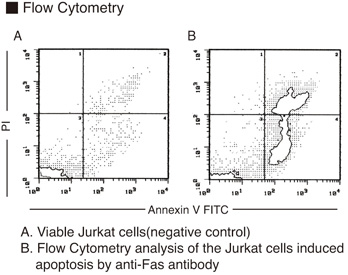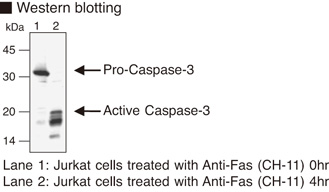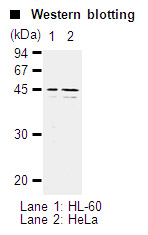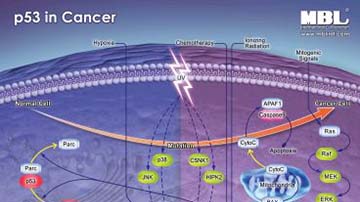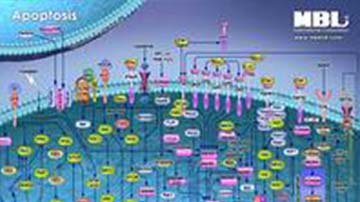Anti-Caspase-10 (Human) mAb
Monoclonal Antibody of 100 μL targeting Caspase-10 for WB
| Target | Caspase-10 |
|---|---|
| Product Type | Antibody |
| Application | WB |
| Clonality | Monoclonal |
| Conjugate | Unlabeled |
| Isotype | IgG1 ĸ |
| Immunogen | Recombinant human full-length FLICE2 |
| Host Species | Mouse |
| Species Reactivity | Human |
| Formulation | 100 µg IgG in 100 µL volume of PBS containing 50% glycerol, pH 7.2. No preservative is contained. |
| Research Area | Apoptosis |
| Description/Background | Apoptosis is a major form of cell death characterized by several morphological features that include chromatin condensation and fragmentation, cell membrane blebbing, and formation of apoptotic bodies. These morphological changes occur via signaling pathway that leads to the recruitment and activation of caspases, a family of cysteine-containing, aspartate-specific proteases. Caspases exist as inactive proenzymes in cells and are activated through their processing into two subunits in response to apoptotic stimulation. Activated caspases cleave a variety of important cellular proteins, other caspases, and Bcl-2 family members, leading to a commitment to cell death. Caspase-10 (also known as Mch4, FLICE2 and ICE-LAP4) is a ~58 kDa protein. This caspase acts upstream of the apoptosis induced cascade. Once this caspase is activated by certain apoptotic stimuli, this protein may be responsible for the activation of the other caspases such as caspase-3, -4, -7, -8, and -9. This antibody was made against human-originated immunogen, and detects human caspase-10 specifically. |
| Storage Temperature | This antibody solution is stable for one year from the date of purchase when stored at -20°C. |
| Protocols | WB |
| Clone Number | 4C1 |
| Concentration | 1 mg/mL |
| Source | This antibody was purified from hybridoma (clone 4C1) supernatant using protein A agarose. This hybridoma was established by fusion of mouse myeloma cell P3U1 with Balb/c mouse splenocyte immunized with the recombinant full-length of human FLICE2. |
| Regulatory Statement | For Research Use Only. Not for use in diagnostic procedures. |



